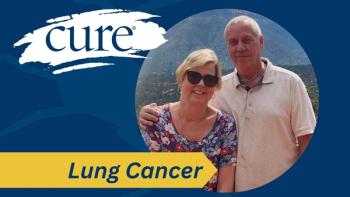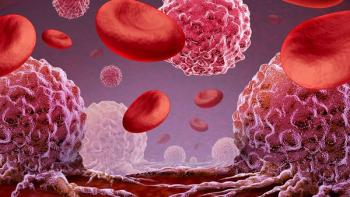
Music Therapy Helps Children With Cancer, Eases Caregiver Burden
Musical play engages children with cancer, which relieves stress for them and their parents/caregivers, an expert said.
Music therapy for children with cancer can offer relief and counteract feelings of stress regarding cancer treatment, which ultimately reduces feelings of burden for parents and caregivers, according to a recent study published in Pediatric Blood & Cancer.
The study included 43 interviews with parents of children with cancer aged 3 to 8 or their caregivers, in which researchers analyzed interviews focusing on underrepresented groups associated with race and ethnicity, along with parent roles.
The researchers from the study worked with music therapists, who used active music engagement (AME) with children with cancer to create a safe space, which led to the parents and children having a “transformative experience,” the researchers wrote.
Learning and enactment from AME were also important, the study noted, because they introduced new skills to counteract suffering.
“Children use play to process their worlds. Music play is particularly engaging for them,” said Kristin Stegenga, co-author of the study and a nurse researcher at Children’s Mercy in Kansas City. “Children with cancer experience a lot of distress related to treatments, hospitalizations, etc. In addition, their opportunities to make choices in their world and what is happening to them are greatly diminished because they have little choice in the things that happen as part of treatment.”
CURE® spoke with Stegenga about the benefits of music therapy in the patient population of children and how it can help their parents and caregivers.
CURE®: Why and how is the study important for parents with children who have cancer?
Stegenga: There is nothing worse for a parent to hear than “Your child has cancer.” It is immediately distressing to the parent who wants so much to spare their child from what is about to happen. We know that parent and child distress are heavily intertwined, so we have parents feeling terrible about what they have to do to help their child get better and children who don’t have the capacity yet to understand why this is happening.
What they are aware of is that they do not like the things that are happening to them, so they are understandably upset. Identifying ways to support both parents and children addresses distress from both perspectives. Parents see their children doing fun, normal things and it reminds them that their child is more than the horrible diagnosis they have, their “normal” child is still in there, under all of the negative sequelae of cancer treatment.
Children naturally gravitate to what makes them feel happy and good, so they pick up the music activities readily. So, it really is a positive experience for both parent and child.
READ MORE:
How can parents/caregivers apply this information about active music engagement to mitigate distress associated with receiving cancer treatment?
Many cancer centers have music therapy, so asking for that service when in the hospital is one thing parents can do. But another important thing to remember — which is very hard when a child is in active treatment — is that they will play if given enough stimulation. We see a lot of use of electronics (tablets, phones, etc.) for keeping children entertained during treatment but opportunities to do things together are good for both parent and child.
We know that parents are stressed and that this might seem like one more thing for them to do. So it might be that a few sessions with a music therapist could help them support their child without adding to their perceived burden. The therapist does the “heavy lifting” in the session and provides a model of ways to interact with the child and parents can apply that. They can also simply recognize that music might be a way to engage their child and apply that themselves but that is the beauty of having therapists is that they can facilitate.
Knowing that AME was effective for children with cancer in the study, what are some next steps for parents/caregivers in the real-world setting?
Requesting music therapy services is probably the easiest way to explore the role of music in their child’s treatment journey. However, there are not always enough music therapists to cover everything. Recognizing that musical play activities can be fun and engaging is a great first step.
Most kids like music, so identifying songs that their child likes to sing or instruments that they might want to explore is great. This isn’t about buying a piano or anything, just fun instruments or books, programs that allow the child access to sound-making and creativity are great for their wellbeing.
What are some interesting or surprising outcomes that arose during the study?
What we found was that the children were really the primary instigators and brought their parents along. Part of the intervention was to give the children choices and let them exercise some autonomy, but we envisioned parent facilitation.
What we learned was children noted that doing the music play activities made them feel better so when they needed to feel better at other times, they would grab their music play kits and start to play. Parents joined the child, recognizing that this was a fun, light-hearted, supportive activity and when siblings were present, the child with cancer would engage them as well, often being in charge of deciding who would play what instrument or what activity the family would do.
This had several effects: 1) the child was engaged in a very normal childhood activity, 2) there was a fun family interaction and 3) parents were able to see their child as the “normal” child, not just through the lens of their cancer diagnosis and this in turn reduced distress for both parent and child. When siblings were present, it also pulled them into the activity and family time which is important when parents are often away from home with their child with cancer, so it is a really challenging time for all family members.
Transcription was edited for clarity and conciseness.
For more news on cancer updates, research and education, don’t forget to





